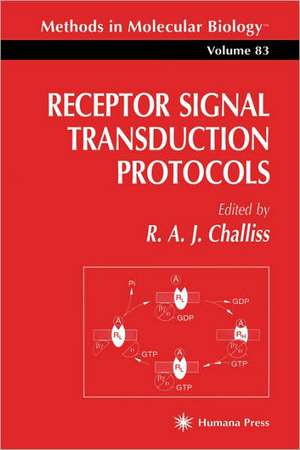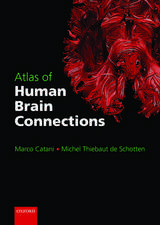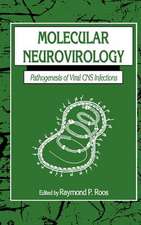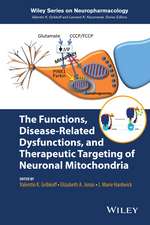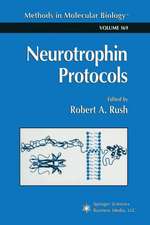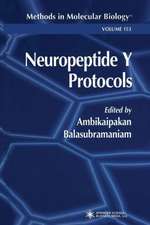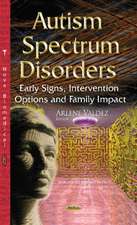Receptor Signal Transduction Protocols: Methods in Molecular Biology, cartea 83
Editat de R. A. J. Challissen Limba Engleză Hardback – 8 mai 1997
| Toate formatele și edițiile | Preț | Express |
|---|---|---|
| Paperback (1) | 639.73 lei 43-57 zile | |
| Humana Press Inc. – 8 aug 2013 | 639.73 lei 43-57 zile | |
| Hardback (1) | 648.56 lei 43-57 zile | |
| Humana Press Inc. – 8 mai 1997 | 648.56 lei 43-57 zile |
Din seria Methods in Molecular Biology
- 9%
 Preț: 791.59 lei
Preț: 791.59 lei - 23%
 Preț: 598.56 lei
Preț: 598.56 lei - 20%
 Preț: 882.95 lei
Preț: 882.95 lei -
 Preț: 252.04 lei
Preț: 252.04 lei - 5%
 Preț: 802.69 lei
Preț: 802.69 lei - 5%
 Preț: 729.61 lei
Preț: 729.61 lei - 5%
 Preț: 731.43 lei
Preț: 731.43 lei - 5%
 Preț: 741.30 lei
Preț: 741.30 lei - 5%
 Preț: 747.16 lei
Preț: 747.16 lei - 15%
 Preț: 663.45 lei
Preț: 663.45 lei - 18%
 Preț: 1025.34 lei
Preț: 1025.34 lei - 5%
 Preț: 734.57 lei
Preț: 734.57 lei - 18%
 Preț: 914.20 lei
Preț: 914.20 lei - 15%
 Preț: 664.61 lei
Preț: 664.61 lei - 15%
 Preț: 654.12 lei
Preț: 654.12 lei - 18%
 Preț: 1414.74 lei
Preț: 1414.74 lei - 5%
 Preț: 742.60 lei
Preț: 742.60 lei - 20%
 Preț: 821.63 lei
Preț: 821.63 lei - 18%
 Preț: 972.30 lei
Preț: 972.30 lei - 15%
 Preț: 660.49 lei
Preț: 660.49 lei - 5%
 Preț: 738.41 lei
Preț: 738.41 lei - 18%
 Preț: 984.92 lei
Preț: 984.92 lei - 5%
 Preț: 733.29 lei
Preț: 733.29 lei -
 Preț: 392.58 lei
Preț: 392.58 lei - 5%
 Preț: 746.26 lei
Preț: 746.26 lei - 18%
 Preț: 962.66 lei
Preț: 962.66 lei - 23%
 Preț: 860.21 lei
Preț: 860.21 lei - 15%
 Preț: 652.64 lei
Preț: 652.64 lei - 5%
 Preț: 1055.50 lei
Preț: 1055.50 lei - 23%
 Preț: 883.85 lei
Preț: 883.85 lei - 19%
 Preț: 491.88 lei
Preț: 491.88 lei - 5%
 Preț: 1038.84 lei
Preț: 1038.84 lei - 5%
 Preț: 524.15 lei
Preț: 524.15 lei - 18%
 Preț: 2122.34 lei
Preț: 2122.34 lei - 5%
 Preț: 1299.23 lei
Preț: 1299.23 lei - 5%
 Preț: 1339.10 lei
Preț: 1339.10 lei - 18%
 Preț: 1390.26 lei
Preț: 1390.26 lei - 18%
 Preț: 1395.63 lei
Preț: 1395.63 lei - 18%
 Preț: 1129.65 lei
Preț: 1129.65 lei - 18%
 Preț: 1408.26 lei
Preț: 1408.26 lei - 18%
 Preț: 1124.92 lei
Preț: 1124.92 lei - 18%
 Preț: 966.27 lei
Preț: 966.27 lei - 5%
 Preț: 1299.99 lei
Preț: 1299.99 lei - 5%
 Preț: 1108.51 lei
Preț: 1108.51 lei - 5%
 Preț: 983.72 lei
Preț: 983.72 lei - 5%
 Preț: 728.16 lei
Preț: 728.16 lei - 18%
 Preț: 1118.62 lei
Preț: 1118.62 lei - 18%
 Preț: 955.25 lei
Preț: 955.25 lei - 5%
 Preț: 1035.60 lei
Preț: 1035.60 lei - 18%
 Preț: 1400.35 lei
Preț: 1400.35 lei
Preț: 648.56 lei
Preț vechi: 763.01 lei
-15% Nou
Puncte Express: 973
Preț estimativ în valută:
124.10€ • 129.90$ • 103.29£
124.10€ • 129.90$ • 103.29£
Carte tipărită la comandă
Livrare economică 31 martie-14 aprilie
Preluare comenzi: 021 569.72.76
Specificații
ISBN-13: 9780896034952
ISBN-10: 089603495X
Pagini: 275
Ilustrații: XIII, 275 p.
Dimensiuni: 155 x 235 x 24 mm
Greutate: 0.64 kg
Ediția:1997
Editura: Humana Press Inc.
Colecția Humana
Seria Methods in Molecular Biology
Locul publicării:Totowa, NJ, United States
ISBN-10: 089603495X
Pagini: 275
Ilustrații: XIII, 275 p.
Dimensiuni: 155 x 235 x 24 mm
Greutate: 0.64 kg
Ediția:1997
Editura: Humana Press Inc.
Colecția Humana
Seria Methods in Molecular Biology
Locul publicării:Totowa, NJ, United States
Public țintă
ResearchCuprins
Methods for Characterizing Receptors.- Radioligand-Binding Methods for Membrane Preparations and Intact Cells.- Site-Directed Mutagenesis and Chimeric Receptors in the Study of Receptor-Ligand Binding.- Approaches to the Stable Transfection of G Protein-Coupled Receptors.- Methods for Transient Expression of Hetero-Oligomeric Ligand-Gated Ion Channels.- The Generation of Receptor-Selective Antibodies.- In Situ Hybridization.- lmmunocytochemical Methods for Investigating Receptor Localization.- Methods for Studying Receptor Coupling Mechanisms.- Measurement of Agonist-Stimulated [35S]GTP?S Binding to Cell Membranes.- Autoradiographic Visualization in Brain of Receptor-G Protein Coupling Using [35S]GTP?S Binding.- Agonist-Induced High-Affinity GTP Hydrolysis as an Index of Receptor-Mediated G Protein Activation in Mammalian Brain Membranes.- Use of Random-Saturation Mutagenesis to Study Receptor-G Protein Coupling.- Identification and Quantitation of G Protein ?-Subunits.- Covalent Modification of G Proteins by Affinity Labeling.- Heterologous Expression of Receptors and Signaling Proteins in Adult Mammalian Sympathetic Neurons by Microinjection.- Nuclear Application of Antisense Oligonucleotides by Microinjection and Ballistomagnetic Transfer to Identify G Protein Heterotrimers Activating Phospholipase C.- Use of Antisense-Generating Plasmids to Probe the Function of Signal Transduction Proteins in Primary Neurons.- Methods for Investigating the Regulation of Receptor Function.- Protocols Employed in the Investigation of G Protein-Coupled Receptor Phosphorylation.- Assay of G Protein-Coupled Receptor Kinase Activity by Rhodopsin Phosphorylation.- Radioligand Binding Measurement of Receptor Sequestration in Intact and Permeabilized Cells.- Regulation of ReceptorExpression.
Textul de pe ultima copertă
R. A. J. Challiss assembles in Receptor Signal Transduction Protocols an outstanding collection of state-of-the-art methods from leading experts for interrogating ligand-receptor and receptor-effector interactions. These powerful methods emphasize the regulation of G-protein-coupled receptors and focus on receptor characterization, methods for investigating how receptors couple to G-proteins, and approaches to studying how receptor expression and function is regulated. Designed to be easily reproducible, the protocols offered include chimeric receptor construction, antibody generation, transient and stable transfection methods, in situ hybridization, as well as immunocytochemistry, functional assays of G-protein function, antisense methods for defining receptor-effector coupling pathways, and many more.
Receptor Signal Transduction Protocols blends authoritative descriptions and applications of well-established methodologies with many novel techniques at the cutting edge of signal transduction research. The coverage cuts across disciplines and allows those already well-versed in one area to expand their repertoire of potent methods and broaden their research horizons. Every researcher interested in signal transduction today will find this richly practical guide indispensable.
Receptor Signal Transduction Protocols blends authoritative descriptions and applications of well-established methodologies with many novel techniques at the cutting edge of signal transduction research. The coverage cuts across disciplines and allows those already well-versed in one area to expand their repertoire of potent methods and broaden their research horizons. Every researcher interested in signal transduction today will find this richly practical guide indispensable.
